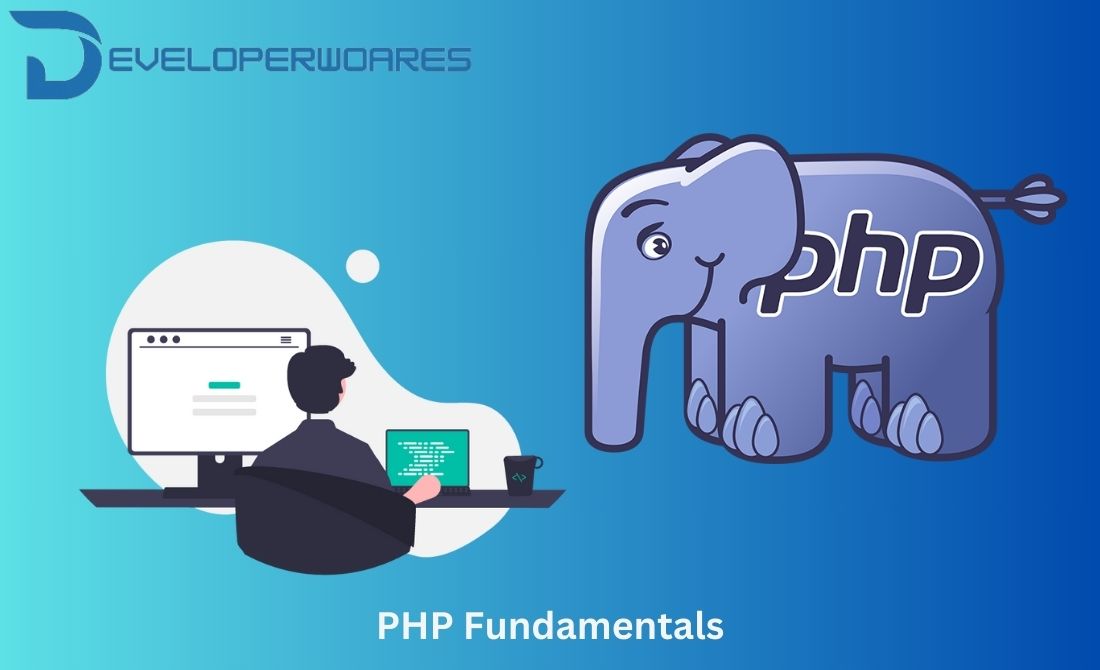Hypertext Preprocessor (PHP) is an open-source, free server-side scripting language used in web development. PHP is a server-side scripting language popular for web development and business applications. According to Web Technology Surveys, 78.1% of all websites use PHP. PHP is one of the most popular languages for creating interactive websites and web applications due to its open-source tools and fast running speed. PHP is used by many of today’s biggest web platforms, including Facebook, Flickr, Yahoo, MailChimp, and Wikipedia, to name a few.
Businesses are looking for PHP web development trends to develop a perfect web app as the market for PHP increases. Learn about PHP technology, PHP framework applications, and how to build a career as a PHP developer.
What is PHP
PHP (Hypertext Processor) is a general-purpose scripting language and interpreter used widely for web development. This language is primarily used for server-side scripting, although it can also be used for command-line scripting and, to a limited extent, for desktop applications. Originally called Personal Home Page Tools, PHP now stands for PHP: Hypertext Preprocessor, which the PHP Group describes as a recursive acronym. When used for server-side scripting, PHP is added to a web page to generate dynamic content when accessed through a client browser. Web servers run scripts before transmitting pages to browsers.
The web server will need to install PHP on the server, along with either a CGI parser or a PHP parser module. A user requests a webpage from the server, and the parser interprets the PHP portion of the page, performs the operations required by the PHP script, and generates the Hypertext Markup Language (HTML) that results. The HTML is then sent to the client browser and any other HTML on the page to ensure that the content is rendered seamlessly. Dynamic HTML pages contain PHP scripts whose content varies based on the results of interpreting the script.
Why PHP is better than other programming languages
You might be wondering what makes PHP different from other server-side languages like ASP.NET or Java. There are several reasons why PHP is a good choice.
- PHP is an easy language to learn and use. Beginner programmers who are new to web development often choose PHP as their language of choice.
- Open source: PHP is an open-source project. The software is developed and maintained by a worldwide community of developers who make its source code freely available.
- Fast Performance: PHP scripts usually execute more quickly than scripts written in ASP, Ruby, Python, Java, and other programming languages.
- Vast Community: PHP is supported by a worldwide community, so you can find help and documentation related to PHP online.
- Portability: PHP runs on a wide range of platforms, including Windows, Linux, Mac OS, and almost all servers, like Apache, IIS, etc.
Careers in PHP: How to Get Started
You might be interested in a career in PHP if you enjoy coding and are passionate about website development. A PHP Developer designs, tests, and develops websites, applications, and programs using the PHP programming language. The PHP market and the demand for PHP developers are booming.
PHP has driven the demand for development languages year after year.
PHP is one of the top five in-demand programming languages today. There are several reasons for PHP’s growth. Microsoft and Apple provide strong support for PHP as part of integrated development environments (IDEs) such as Visual Studio and Xcode. There are now enterprise-ready IDEs that support PHP, C#, and Swift.
PHP development requires a bachelor’s degree in computer science, software engineering, or programming. Here are some skills required to get hired as a PHP developer:
- A basic understanding of PHP, even if you are a beginner
- Knowledge of Ajax, jQuery, and MySQL
- JavaScript, CSS, and HTML proficiency
- Learn the open-source web framework – CakePHP and the unit testing framework – PHPUnit
- Photoshop or similar design tool
- Unix/Linux, APIs, and MVC Framework Architecture knowledge
- Good Communication Skills
- Capacity for problem solving
- Having a knack for critical thinking
The PHP Developer job role is a well-paying position that offers great career opportunities. Payscale reports that the average salary of a PHP developer in the US is $74,126 annually.
PHP programming takes how long to learn
Learning PHP programming varies from person to person, but if you’re committed, you’re probably able to learn it in three to six months. This time depends on what type of learning you do, such as books, tutorials, and classes, and how much time you spend practicing the program on your own. The PHP language is constantly evolving, so there is no end to how much you can learn about it, but with practice and time, you can become proficient.
History of PHP
PHP was created by Rasmus Lerdorf in 1994 primarily to set Common Gateway Interface (CGI) binaries in C programming language, the first version being written in 1994. The latest version of PHP is version 8, released on November 24, 2022. HTML files can easily be embedded with it. The HTML code can also be written in a PHP file. PHP codes execute on the server side, whereas HTML codes are directly executed by the browser.
See more: What Is CSS – Exploring Its Definition And Importance
Final Thoughts
Every developer must start somewhere. With the right PHP tutorial, you can master PHP without having to spend a fortune on expensive college courses. In web development, learning the multiple languages required to build a website is the most challenging part. A PHP program is easy to learn and a great introduction to more complex web languages such as HTML, CSS, SQL, and JavaScript.




